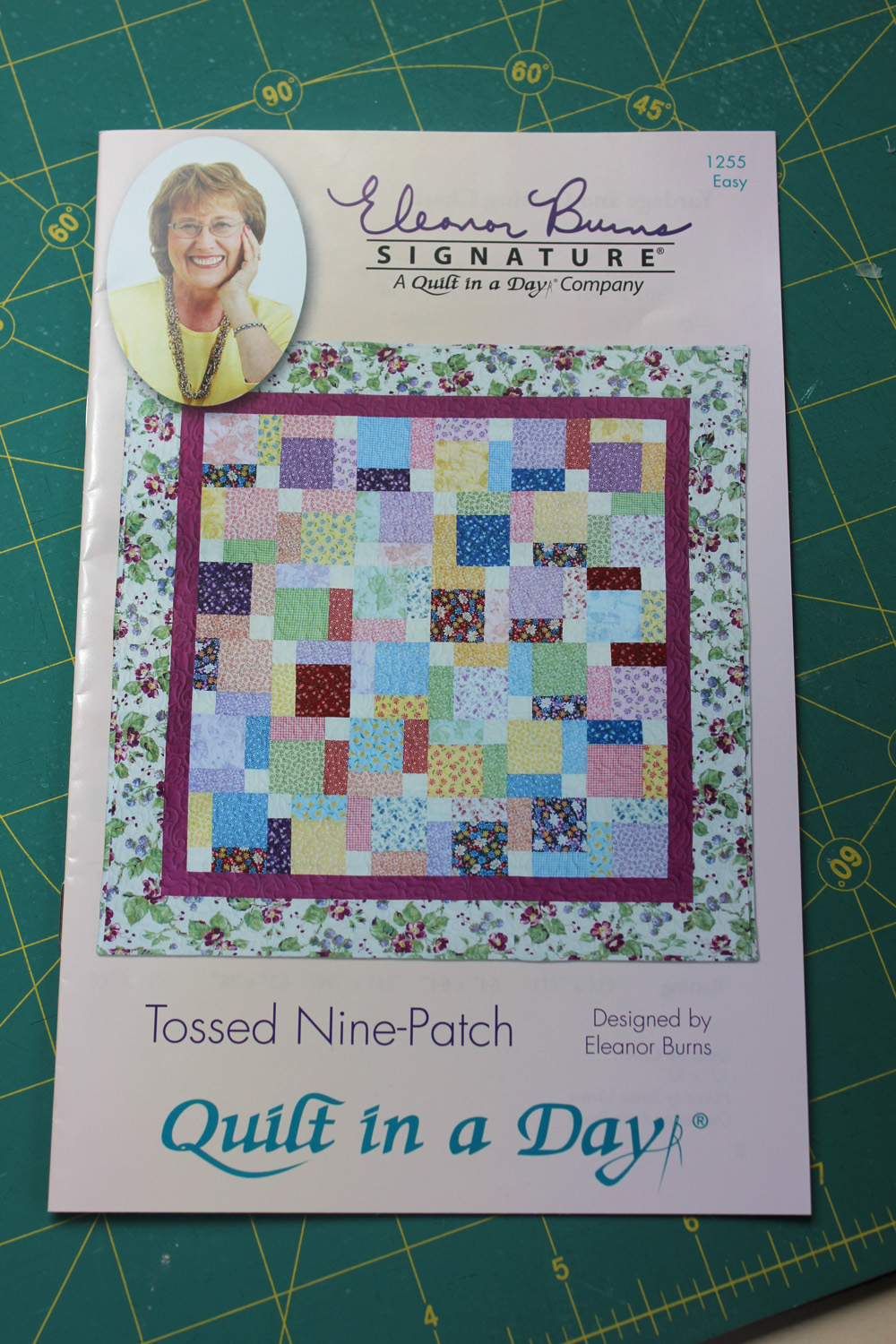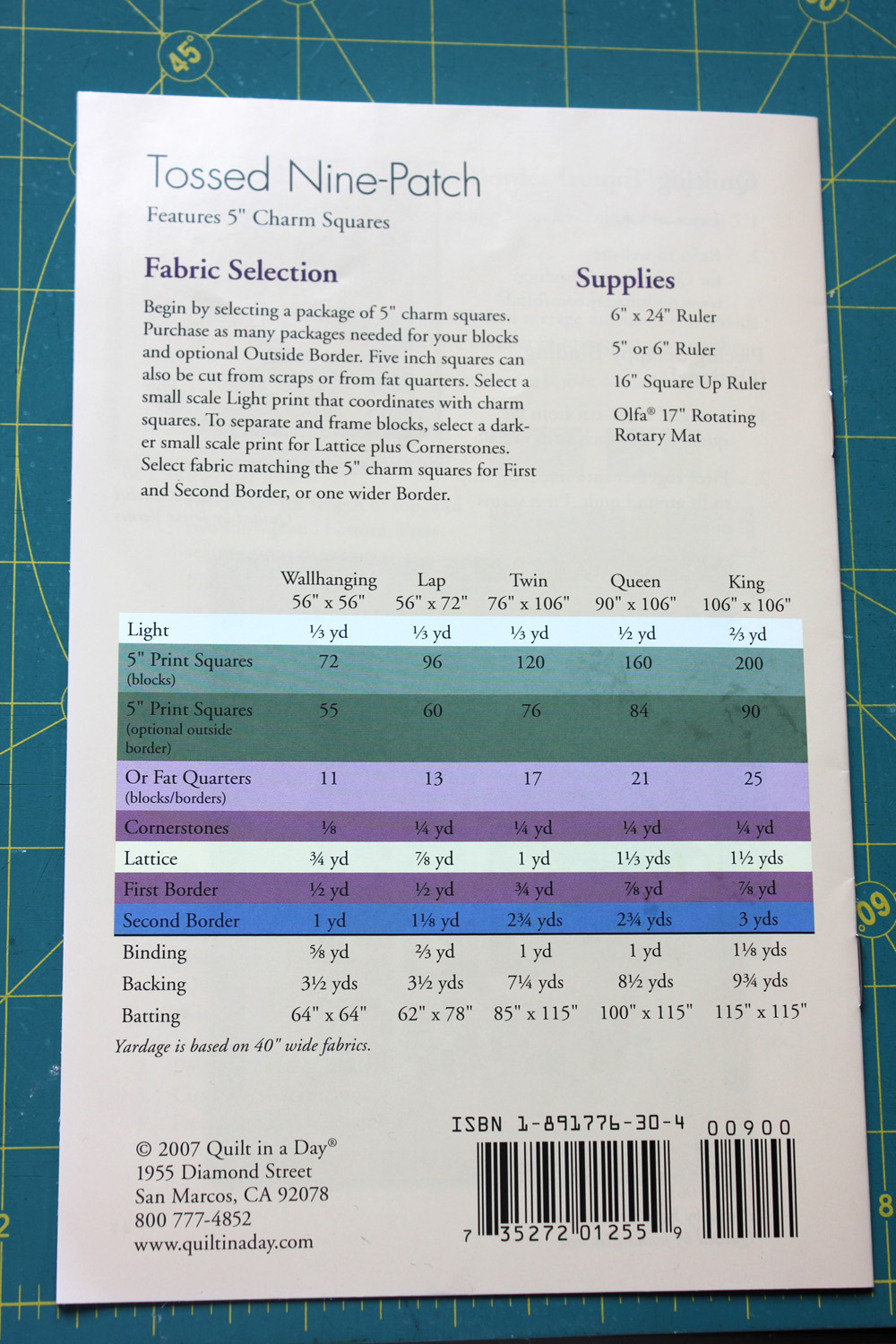
I remember when I first began quilting, I had such great expectations of what I could do. The true fact of the matter was however, I needed to learn the ins and outs of quilting first. I needed to learn how to choose my fabric, what tools and supplies I would need, what my seam allowance should be, how to choose and read a pattern, and so on.

For the new quilters out there, perhaps the most important thing to learn is how to choose and read a quilting pattern, which we will discuss here. You could select the most beautiful, well-constructed fabric in the world, but if you don’t know how to read your pattern to actually create your quilt, you will likely end in disaster. Squares could be cut wrong, piecing could be done incorrectly, or the pattern selected could be just completely out of your skill set and your poor quilt will never get completed in the first place. No thank you!
Selecting Patterns
The first thing to discuss is where to find these patterns in the first place. I always tend to go for a book because the value is awesome when you consider the number of patterns you get and the tailored help that each pattern provides you. Not to mention all the great color options they give you.
Another great thing about pattern books is that they will clearly define the skill level identified for each pattern – you only need to glance at the table of contents to get a clear picture. If you find a book with all levels of skill represented – beginner to advanced – you could easily work your way through a book, continually enhancing your quilting techniques along the way. Individual patterns or patterns from magazines should clearly label what skill level they are too.
 If you’re new to quilting, a small quilt project is the way to go to get your feet wet. These are a little more manageable and less intimidating for beginners. I would recommend starting with a small wall hanging or table runner. You could then move on to a baby quilt or lap quilt before tackling that king size quilt of your dreams.
If you’re new to quilting, a small quilt project is the way to go to get your feet wet. These are a little more manageable and less intimidating for beginners. I would recommend starting with a small wall hanging or table runner. You could then move on to a baby quilt or lap quilt before tackling that king size quilt of your dreams.
Another tip for selecting patterns: make sure to read through it completely before you buy or decide on it. I like to do this so I can make sure I don’t need any additional rulers or other supplies I may not have at the moment. I also like to check to make sure it is well written, easy to follow, and includes good – no, great! – illustrations of the cutting and piecing. This will prevent headaches later on.
Considering Fabric
Now that you have selected a pattern that works for you, it’s time for the fun part: choosing your fabric! You may have a stash already at home, or you may choose to head to the fabric store and select something new from their section of quilt fabrics.
 How much fabric you’ll need (“yardage”) will be listed on the first page of any pattern from a book or magazine, or on the back of the package for an individual pattern. It will give you a choice of what size quilt you would like to make, and directly down from the size you will find the yardage of each individual fabric you will need.
How much fabric you’ll need (“yardage”) will be listed on the first page of any pattern from a book or magazine, or on the back of the package for an individual pattern. It will give you a choice of what size quilt you would like to make, and directly down from the size you will find the yardage of each individual fabric you will need.
My advice for beginner and more experienced quilters alike is to purchase more fabric than you think you will need to ensure you have the same dye lot for your entire quilt. (“Dye lot” refers to the batch in which your fabric is produced – even the same brand, type, and color of fabric can vary if it’s been dyed or printed in different batches.) If you decide to increase the size of your quilt, if you miscut any pieces, or if you decide to make matching pillows or shams later on, you know you’ll be working with perfectly matching fabrics. There is a good chance that if you go back to your quilt shop at a later date you won’t have access to the same material. If you end up not using that extra fabric, just add it to your stash!
Following Instructions
With pattern and fabric selected, you’re ready to begin cutting. I absolutely love patterns that illustrate how to cut and piece your fabric. It is a great learning tool for a visual learner like myself.
During the cutting process, take your time and remember that it often takes as long to cut your fabric as it does to sew the pieces. Precision is the key to a good outcome; make sure your rotary blade is sharp. (I replace mine after each project.)
 If it doesn’t state clearly in your pattern, you will want to cut off the selvage of your fabric (this is the tightly woven edge of the fabric). If it is not cut off, you may experience puckering if you wash your quilt because the selvage does not shrink at the same rate as your fabric.
If it doesn’t state clearly in your pattern, you will want to cut off the selvage of your fabric (this is the tightly woven edge of the fabric). If it is not cut off, you may experience puckering if you wash your quilt because the selvage does not shrink at the same rate as your fabric.
Another important tip I always share with new quilters is to never use your cutting mat as a measuring tool, no matter how tempting it may be. A mat can easily warp over time or the lines can rub off or fade. Again, precision is key and a mat just can’t give you the precision that a nice quality quilting ruler can. (Relying on rulers for measuring can also prolong the life of your mat since you won’t be relying on a single line or two of your mat to do your measuring – rulers should help ensure even wear across a larger surface of your mat.)
It goes without saying, but make sure to follow the cutting instructions of your pattern completely. After each section is cut, put it in a baggie and label it so you know what you are looking for when your pattern asks for it.
Once all your fabric is cut, read your pattern through one more time. This will give you an idea of exactly where you are going with the process, being able to see the “big picture” as they say. From then on, you should be fine working step-by-step, focusing on just the step you are currently on. Sometimes it can be a bit overwhelming taking on a new project, especially a bigger quilt, so focusing on single steps at a time should help with that. You’ll be amazed at how quickly your quilt can come together.
Pay attention to the photos too – they will often incorporate arrows to show you which direction to press that particular seam. If you run into problems with abbreviations such as WOF (width of fabric) or LOF (length of fabric), don’t panic! There are loads of resources out there to answer these questions, like helpful quilting glossaries that offer definitions. Most books and magazines will offer cutting diagrams too.
If you ever get stuck or have questions, just know that there is a whole world of resources out there to help quilters like you. Ask a friend, refer to a trusted resource, or go to the source of your pattern. If you have a question on a particular pattern, chances are others have had the same question. Sometimes you can contact the pattern designer herself if that information is available, or you could submit a question online if you found the pattern on a website.
Best of luck, and happy quilting!
Related Video: Beginner’s Guide to Quilting: Essential Tools & Supplies
Get in touch! Leave a comment or email editor@nationalquilterscircle.com.

Thank you. Your comments are very helpful. I’ve always wanted to make a quilt and still intend to.
How do I make my first quilt? I need specific step by step instructions. I am 78 and this is my first attempt. Be patient please
Hi, I am needing a very easy first quilt pattern and or book. What would you recommend?
great
That’s my e mail
I have followed this advice, I made 40 quilted table mats, 8 long table runners, two bed runners (super king size) and three lap quilts. n Now I want to do my super king size bed quilt. I want to use a variant of the log cabin pattern I know how to make the block but I can't figure out how much fabric I will need. I just keep putting it off. Can you help.
I am a beginner . Quilters Circle has been very helpful.
I have yet to start my first quilt. I have an idea in my mind, which seems simple enough. It essentially consists of sewing all the strips of a jelly roll together along their long sides and the cutting the resulting rectangle into new strips across the seam lines. Then by shifting the new strips a few blocks along and sewing together again I would have my quilt centre. A little strategic unpicking and resewing would be needed, but I think it would work. As I want it to be a bed spread I would need a couple of jelly rolls. When I asked someone for advice on my proposed plans, it was suggested that it would have an excessive amount of seams. I have tried to look for a pattern that would give me the look I desire without so many seams. I also looked at using charm packs or layer cakes (sliced into four squares), but struggle to find fabric that is suitable. It feels like there is so much I don't know and still have to learn. I appreciate all the advice on this website, and I have already learnt a lot. Unfortunately, it seems my quilting journey has ended in deadlock before it even got started. Help and/or encouragement appreciated!